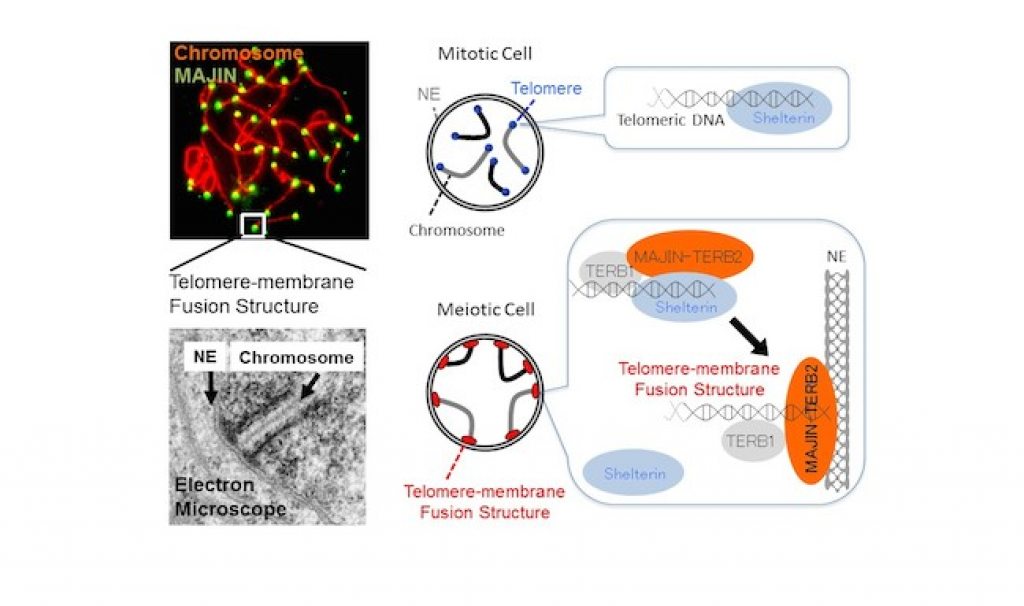
AsianScientist (Dec. 21, 2015) – A University of Tokyo research group has discovered two proteins that bind chromosomes to the membrane enclosing the cell’s nucleus during meiosis, the process of cell division that leads to the creation of sex cells in sexually reproducing organisms. This discovery, published in Cell, provides important insights for investigating human disorders caused by meiotic errors, such as congenital birth defects and miscarriages.
In order to faithfully transmit their genetic information to their progeny, eukaryotic species (those whose cells have a distinct nucleus) have evolved a specialized cell division process termed meiosis that produces germ cells—such as sperm and eggs—with half the number of chromosomes of a normal cell.
Telomeres, long caps of repeating nucleotides at the end of each chromosome, have been implicated in the process of chromosome segregation during meiosis, but the underlying molecular mechanism has remained unknown.
The research group of Professor Yoshinori Watanabe at the Institute of Molecular Cellular Biosciences discovered two meiosis-specific telomere-binding proteins in mice, MAJIN and TERB2, that bind to telomeric DNA and link it to the nuclear envelope, creating the membrane-fused telomere structure characteristic of meiosis, and described the molecular mechanism by which this structure is formed.
Telomeric DNA is usually masked by a protein complex named shelterin, but MAJIN and TERB2 are able to take over telomeric DNA from shelterin. The structure is disrupted in genetically modified mice that cannot produce MAJIN and TERB2, leading to defects in meiotic progression and, ultimately, complete inability to produce sperm or eggs.
“As a result, we conclude that MAJIN and TERB2 are essential structural components of meiotic telomeres in mammals,” says Professor Watanabe. He continues, “The current findings provide us with important clues to understanding and resolving human problems caused by errors in the process of meiosis, which include congenital birth defects and miscarriages.”
The article can be found at: Shibuya et al. (2015) MAJIN Links Telomeric DNA to the Nuclear Membrane by Exchanging Telomere Cap.
———
Source: University of Tokyo.
Disclaimer: This article does not necessarily reflect the views of AsianScientist or its staff.












